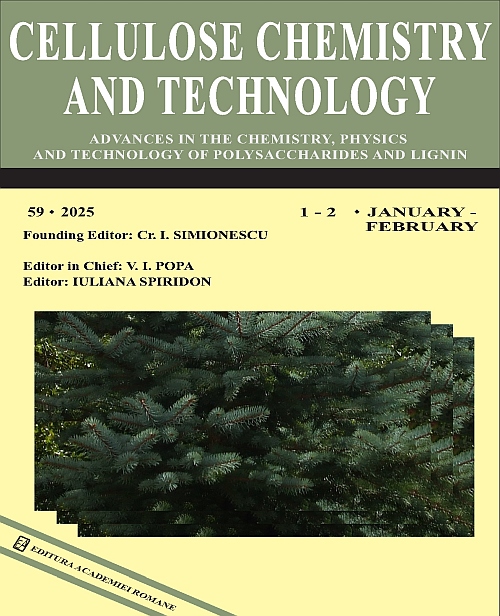|
Title
Valorization of kapok (Ceiba pentandra (L.) Gaertn.) pods for microcrystalline cellulose: extraction and characterization
Authors
E. K. VYDHEHI, AJMAL THAYYULLATHIL, SUBAIR NADUPARAMBATH and T. M. ANJANA
Received
January 27, 2025
Published
Volume 59 Issue 3-4 March-April
Keywords
kapok pods, lignin, holocellulose, α-cellulose, MCC, composites, adsorbents
Abstract
Kapok (Ceiba pentandra) pods – an abundant yet underutilized agricultural waste – were valorized for the first time to
produce high-purity microcrystalline cellulose (MCC) through a tailored chemical process involving delignification,
alkali treatment, and acid hydrolysis. Unlike prior studies focused on kapok fibers, this work exploits the pods’ untapped
potential, addressing both waste disposal challenges and the demand for sustainable cellulose sources. Comprehensive
characterization confirmed the efficacy of the process: FTIR spectra indicated near-complete removal of lignin and
hemicelluloses, while XRD revealed a unique coexistence of cellulose I and II allomorphs, with crystallinity indices
escalating from 67.02% in α-cellulose to 72.39% in MCC. Notably, the derived MCC exhibited exceptional properties –
a mesoporous structure, which was validated by N₂ sorption and suggested by TEM, ideal for dye adsorption, with
enhanced thermal stability, showing decomposition temperature higher than those of α-cellulose and raw pods, and
microfibrous morphology with rough surfaces, as revealed by FE-SEM. Further, colloidal stability analysis (zeta
potential) and particle size distribution underscored its suitability for nanocomposites. This study pioneers Kapok pods
as a low-cost, eco-friendly source of high-performance MCC, offering a dual advantage of waste upcycling and advanced
material fabrication for biosorbents and bionanocomposites.
Link
https://doi.org/10.35812/CelluloseChemTechnol.2025.59.24
|



